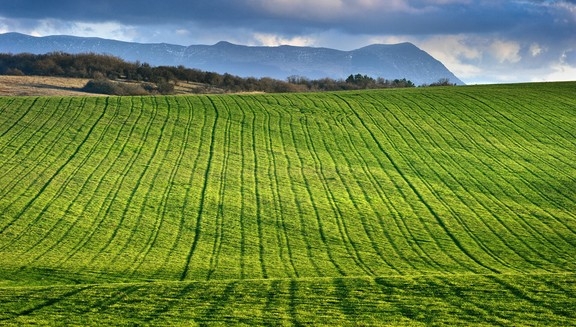The weather in the main producing countries contributed to agricultural work

Last week, all major grain-producing countries had favorable weather conditions for ripening and harvesting, as well as the start of new sowing. Especially pleased with the favorable precipitation in South America, which will improve the condition of wheat crops in Argentina and Brazil.
In the United States, Hurricane Ida brought destruction to the Gulf of Mexico, as well as heavy precipitation on the entire east coast, but they did not cause flooding or damage to crops.
Prolonged and heavy rainfall in the eastern Midwest of the United States over the past two weeks has led to waterlogging of the soil and delayed harvesting of soybeans and corn in early crops, but weather forecasts for the next 7-10 days show warm and dry weather, which will help increase the rate of harvesting.
Precipitation in the western United States and Southern Plains states are projected to receive enough precipitation to improve moisture reserves before winter wheat is sown.
Over the past couple of weeks, the Northern Plains have received heavy rainfall, which reduces the drought, but is unlikely to improve the prospects for soybean and corn crops after a prolonged drought.
Heavy precipitation continues in the Canadian prairies, which hinders the harvesting of spring wheat and canola, which will negatively affect the quality of the crop. In the next 7-10 days, dry and favorable weather is forecast in the provinces of Alberta and Saskatchewan, but in Manitoba precipitation will continue for at least another week.
In the southern part of Brazil, heavy rains took place, which are very favorable for the development of winter wheat crops and replenishment of moisture in the soil before sowing soybeans, which will begin in mid-September. In the central regions of Brazil, dry conditions persist, which allows the end of the second corn harvest and farmers are waiting for the start of the rainy season, which usually occurs at the end of September, to start sowing soybeans.
In Argentina, over the past week, there has been scattered precipitation and temperatures have increased, which contributes to the development of wheat crops. Over the next 5-7 days, precipitation is forecast to increase, and this will improve production prospects.
In Ukraine and Russia, the precipitation that took place in August was very favorable for sowing winter rapeseed, as well as filling sunflower and corn. Moisture reserves in the soil are sufficient to start sowing winter wheat, which will begin this week. Dry and warm weather is forecast for the next 7-10 days, which will help accelerate the harvesting of sunflower and sowing of winter wheat, as well as the ripening and drying of corn.


